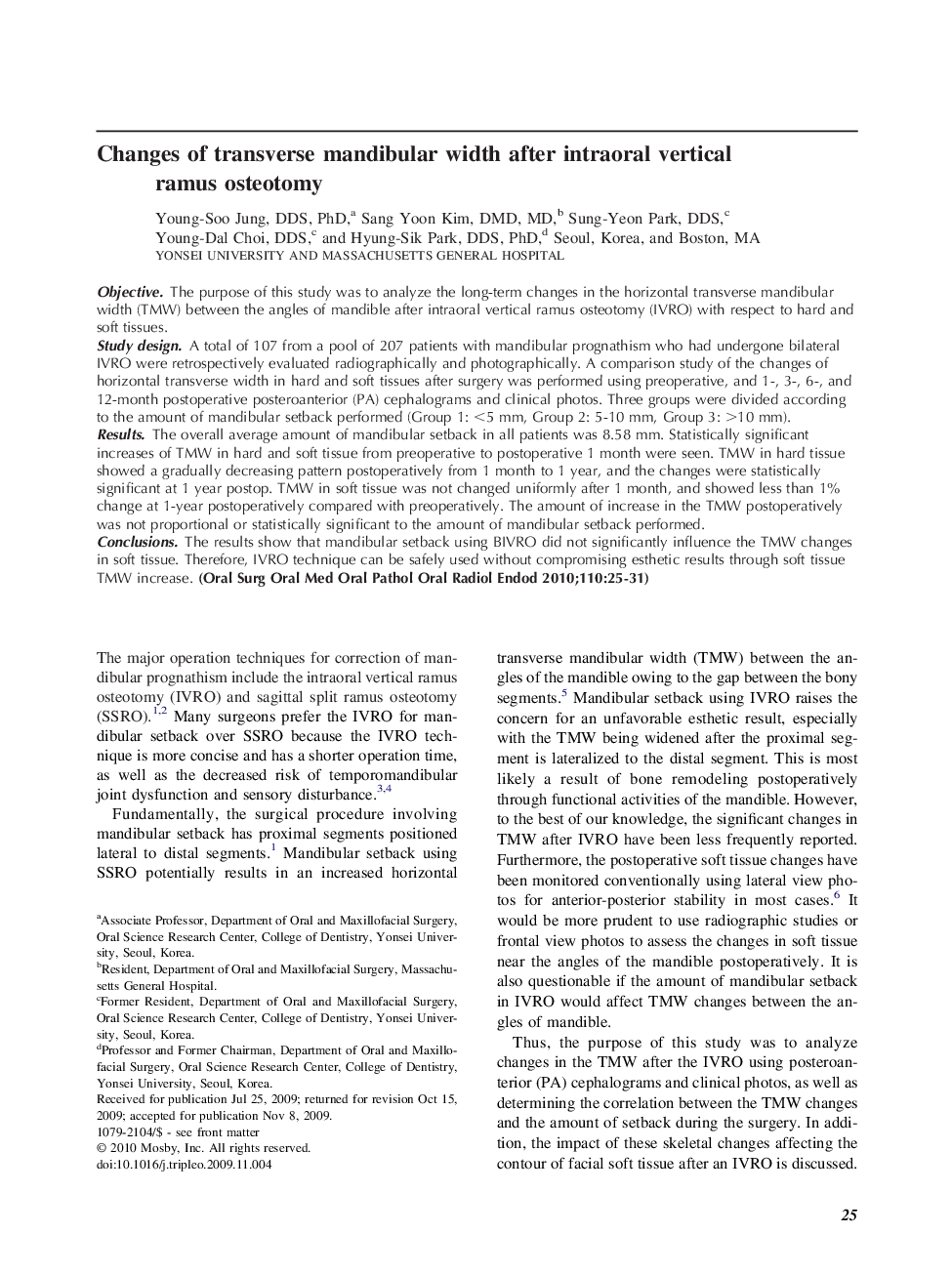| Article ID | Journal | Published Year | Pages | File Type |
|---|---|---|---|---|
| 3167543 | Oral Surgery, Oral Medicine, Oral Pathology, Oral Radiology, and Endodontology | 2010 | 7 Pages |
ObjectiveThe purpose of this study was to analyze the long-term changes in the horizontal transverse mandibular width (TMW) between the angles of mandible after intraoral vertical ramus osteotomy (IVRO) with respect to hard and soft tissues.Study designA total of 107 from a pool of 207 patients with mandibular prognathism who had undergone bilateral IVRO were retrospectively evaluated radiographically and photographically. A comparison study of the changes of horizontal transverse width in hard and soft tissues after surgery was performed using preoperative, and 1-, 3-, 6-, and 12-month postoperative posteroanterior (PA) cephalograms and clinical photos. Three groups were divided according to the amount of mandibular setback performed (Group 1: <5 mm, Group 2: 5-10 mm, Group 3: >10 mm).ResultsThe overall average amount of mandibular setback in all patients was 8.58 mm. Statistically significant increases of TMW in hard and soft tissue from preoperative to postoperative 1 month were seen. TMW in hard tissue showed a gradually decreasing pattern postoperatively from 1 month to 1 year, and the changes were statistically significant at 1 year postop. TMW in soft tissue was not changed uniformly after 1 month, and showed less than 1% change at 1-year postoperatively compared with preoperatively. The amount of increase in the TMW postoperatively was not proportional or statistically significant to the amount of mandibular setback performed.ConclusionsThe results show that mandibular setback using BIVRO did not significantly influence the TMW changes in soft tissue. Therefore, IVRO technique can be safely used without compromising esthetic results through soft tissue TMW increase.
